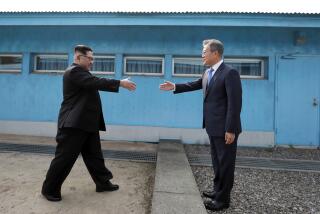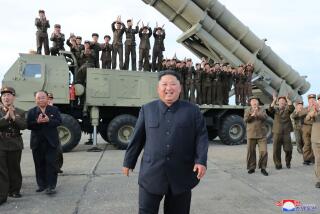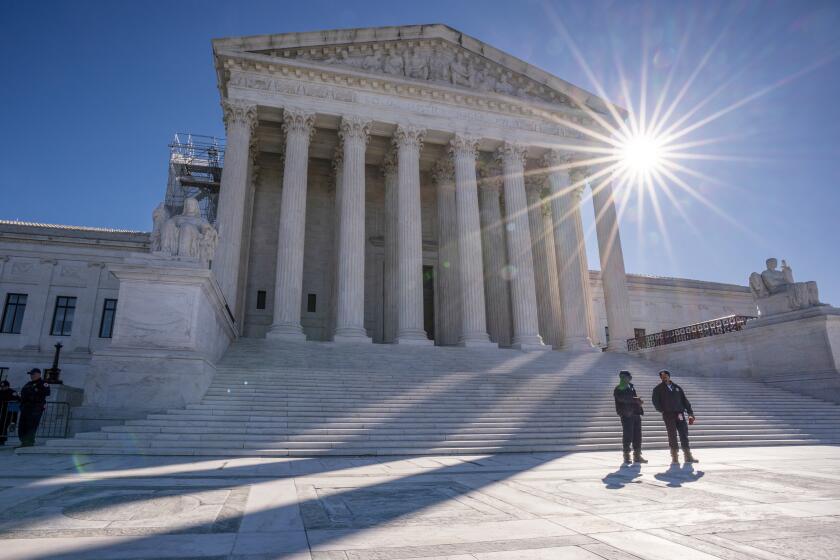Reunification of Korea
- Share via
Robert A. Manning was right when he wrote (Opinion, Nov. 24) that the nuclear accord with North Korea will not be sustainable unless it is a part of a larger design to reduce military confrontation and begin political reconciliation in Korea. Yet the measures he suggested to attain this goal seem short of having a good chance for successful implementation.
Any such “larger design” will not be large enough for a solution to ever-looming Korean problems unless it encompasses the following features:
* A formal ending of the Korean War of 1950-53 to open the way for a realistic disarmament and the pullback of forces on both sides of the dividing line.
* An international political arrangement conducive to the realization of a unified and neutralized Korea, based specifically, among others, on the following principles:
a. The U.S. forces in South Korea as an adversary to North Korea are “technically” withdrawn.
b. North and South Korea co-exist peacefully for a set period of time, say five to 10 years, while promoting mutual contacts and cooperation with a view to mitigating animosity between Seoul and Pyongyang.
c. A new unified Korean government is established, preferably within 10 years, under which no political and social revenge is sought against any person for political activities undertaken prior to reunification.
As a country that originated and sustained the traumatic division of Korea, the U.S. has moral responsibility to end that division and help Koreans realize their long-held aspiration for reunification.
HWAL WOONG LEE
Granada Hills
The writer was a Korean consul in Los Angeles during 1968-71 and later served as president of the Korea Reunification Forum in Los Angeles.
More to Read
Sign up for Essential California
The most important California stories and recommendations in your inbox every morning.
You may occasionally receive promotional content from the Los Angeles Times.










